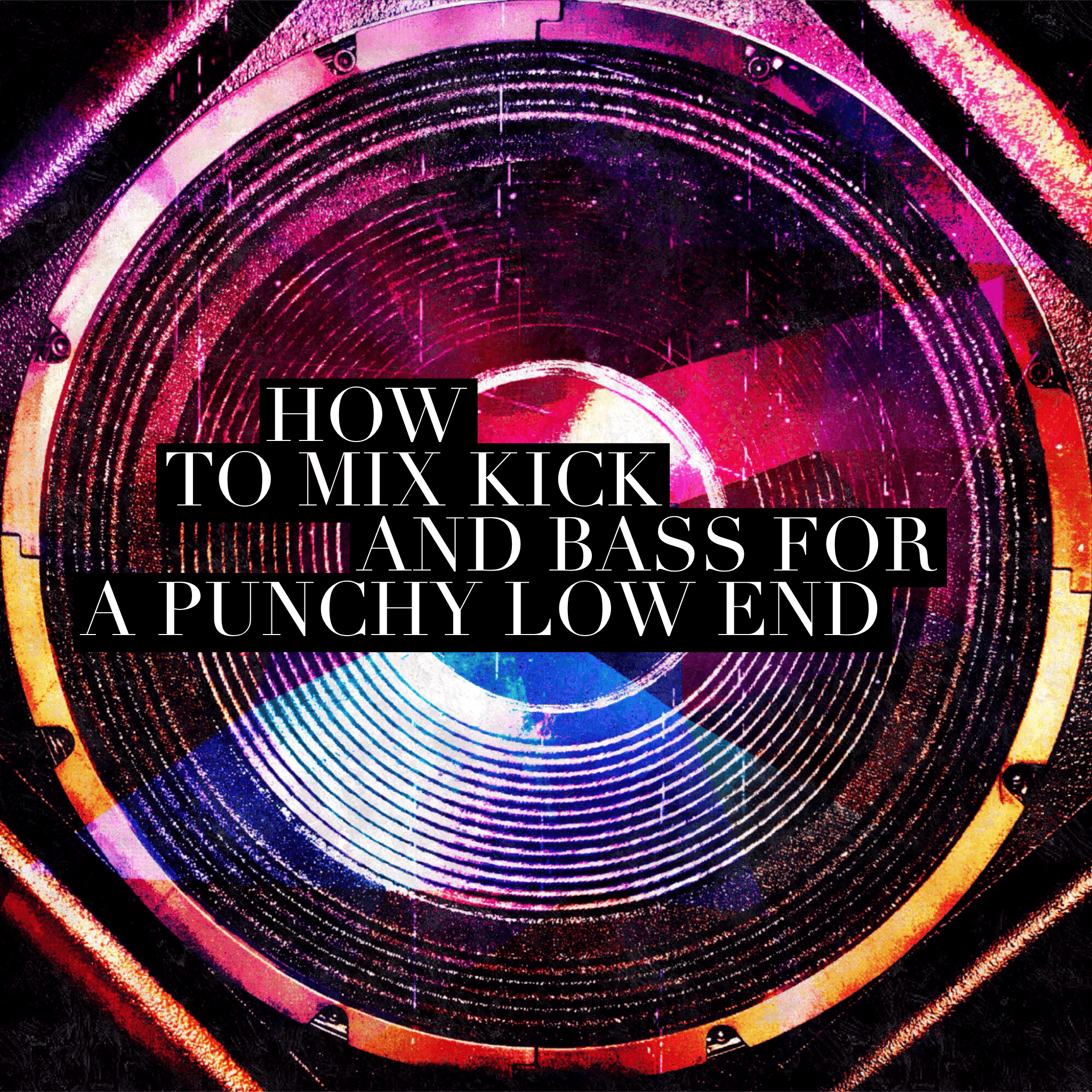No doubt. People love music
with a big, fat, tight and punchy
low end.
Regardless if they are listening
to hip-hop, club music, urban
music and about any modern
pop style.
And therefore, it is super
important that we get the
low end tight in our mixes.
The requirement for a punchy
low end is separating the kick
and the bass.
With an organized approach,
this isn’t that difficult.
You Need To Hear The Low End
Seems obvious. But still a lot
of people mix on speakers that
don’t reliably reproduce anything
below 50Hz.
And without hearing any low end
you’ll be lost trying to control it.
It’s as if you would try to shoot
professional photos wearing a
blindfold.
Another problem is less than
ideal rooms, which most people
work in.
Unless your room has ideal
measurements or you have set
up bass traps to even out your
room’s low-end response…
…chances are you hear too
much or too little bass at your
mixing position…
…even with the most linear
speakers.
A Good Pair Of Headphones Can Help
A good pair of studio quality
headphones won’t let you feel
the low end, but at least it will
enable you to hear it.
And what you hear on your
headphones isn’t affected by
bad room acoustics.
Make Sure, The Kick and The Bass Get Out Of Each Other’s Way
A commonly used technique to
get the bass out of the kick drum’s
way is putting a side chain
compressor on the bass
channel.
The compressor is triggered by
the kick drum and lowers the bass
every time the kick drum plays.
The advantages of that technique
are that…
A) it’s pretty simple to set up
B) it’s an effective way to getting
the bass out of the kick drum’s way.
But it also has a disadvantage:
Every time the kick is playing ALL
of the bass content gets lowered.
When you have a bass with a big
bad rumbling low end you will lose
that big bad rumbling low end every
time the kick is playing.
This CAN result in a really cool
rhythmic texture…
..when your bass pattern consists
primarily of long notes.
But it won’t work if the bass is
playing parallel to the kick drum.
The following technique will work
better in that case.
But before you apply it, you
need to…
Analyze Your Kick Drum
A kick drum usually consists
of 3 components:
1. The fundamental root note
(45 – 75 Hz)
2. The pressure point, an
octave higher (90 – 150 Hz)
3. Noise and harmonic content
The fundamental root note
and the pressure point must
have their own space in the mix,
so the kick drum can stand out…
…while noise and harmonic
content help the kick drum to
be audible on small speakers,
like laptop speakers or small
Bluetooth speakers.
Find The Fundamental Root Note And Pressure Point
!!! Make sure you turn your
speakers and headphones down
before you apply the following
technique !!!
Put a parametric EQ in the
insert of your kick channel.
Then sweep through the low
end with a small peak EQ band
until you locate the fundamental
root note.
Do the same with a second
EQ band to locate the pressure
point. It should be an octave
higher than the fundamental
root note.
Once you have located the
fundamental root note and
pressure point make
sure the bass (or any other
low-end content like electric
guitars or synths) doesn’t mask
these frequencies.
EQing The Bass So The Kick Can Punch
Let’s say your kick’s fundamental
root note is located at 50Hz and
the pressure point at 100Hz.
Now you simply dip these
frequencies with an EQ in your
bass channel until the kick cuts
through.
Sidechaining With A Dynamic EQ
If you are a more experienced
engineer or producer, you can
also, use a sidechain dynamic EQ
(like the Waves C4) on your bass.
This approach has the advantage
that the bass is only EQed each
time the kick drum is playing…
…and stays untouched when
no kick drum is playing.
Make sure only two frequency
bands are turned on. In our
example, you would set them
to 50Hz and 100Hz.
The side chain trigger must
(obviously) be the kick drum.
Set a fast attack and experiment
with the release, ratio, and threshold
settings of both bands until your kick
cuts through.
–
Now it’s up to you to put the
discussed techniques into work
and create mixes with a tight,
punchy low end…
…that will make heads nod
and butts shake!
Please feel free to write any
questions or suggestions in the
comments.
Also, let me know:
Which is your biggest mixing
or production challenge?
Oh…and don’t forget to like
and share by clicking the
famous buttons below or
on the left;-)
Stay creative!
Marc
P.S. Want your beats to stand
out? Then you should absolutely
check out this drum sample pack.
[social_sharing style=”style-20″ fb_like_url=”https://superherosamples.com/how-to-properly-mix-kick-bass-for-a-punchy-low-end/” fb_color=”light” fb_lang=”en_US” fb_text=”like” fb_button_text=”Share” tw_lang=”en” tw_url=”https://superherosamples.com/how-to-properly-mix-kick-bass-for-a-punchy-low-end/” tw_name=”SHeroSamples” tw_button_text=”How to mix Kick & Bass for a punchy LOW END:” g_url=”https://superherosamples.com/how-to-properly-mix-kick-bass-for-a-punchy-low-end/” g_lang=”en-US” g_button_text=”Share” alignment=”center”]
